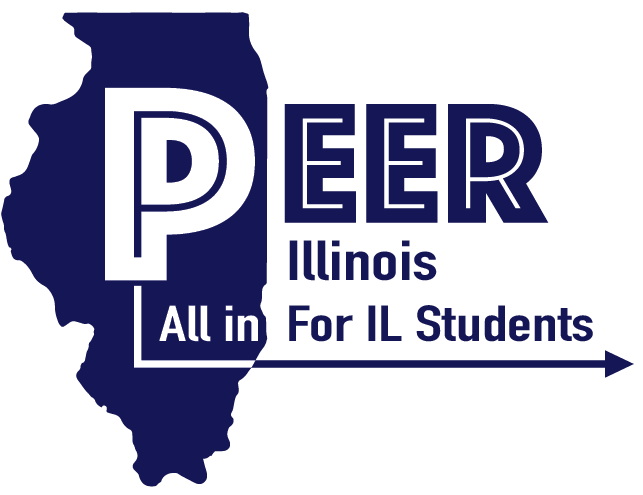PEER Illinois Testifies at FY27 ISBE Budget Hearing
Yesterday, PEER Illinois Coalition Coordinator, Maddy Wheelock, provided testimony at the FY2027 Illinois State Board of Education Budget. Hearing to ask for full funding of the Evidence-Based Funding (EBF) formula. See below for the full statement.
Good afternoon, Illinois State Board of Education Members and Staff:
My name is Madelyn Wheelock. I am the Coalition Coordinator of the Partnership for Equity and Education Rights (or the PEER Illinois coalition) and a former Chicago Public Schools educator.
PEER Illinois organizes parents, youth, educators, and community members around the issue of educational resource equity. We advocate for fully-resourced public schools that meet the needs of all children regardless of race, family income, or neighborhood.
Today, I’d like to speak to the importance of investing in Evidence-Based Funding (EBF), which is meant to be the foundation for school funding in Illinois. According to the Education Law Center (ELC)’s analysis of ISBE data, the EBF formula is underfunded by $5.7 billion. This means the majority of students in Illinois still attend underfunded schools. Despite the goal outlined in the 2017 legislation to reach 100% of adequacy for all school districts by 2027, we are far behind full funding of the formula [See 105 ILCS 5/18-8.15]. A central goal of EBF was that it would help send additional funds to schools that need it most and yet, Illinois received an “F” in funding equity on ELC’s 2024 annual report card.
In these challenging times more than ever, as a field, we need to advocate for robust investment in EBF to remedy these vast disparities. But in order to advocate for real change, we must be honest about where the current funding gap sits. Currently, ISBE’s aggregated data calculates “full funding” of EBF at 90% of adequacy, rather than the 100% benchmark established in Illinois law. This doctored calculation understates the true funding gap and presents a deceptively smaller shortfall than schools actually face, painting an inaccurate picture of the scope of EBF’s underfunding problem.
My question for you today is – what accounts for that missing 10%? If I only paid 90% of my rent to my landlord, they could issue me a pay or quit notice. If I only paid 90% of my electric bill, ComEd could disconnect my service. So why are setting a precedent in our education system that 90% is “good enough”? And, to the extent that this 10% is intended to account for average receipts of federal grant funds, can we in good conscience continue to rely on that source of revenue for districts in this moment?
Illinois is actively harming children by accepting that permanent underfunding is normal. While ISBE acknowledges funding gaps and calls for additional dollars, framing 90% of adequacy as “full funding” ultimately minimizes the scale of the deficit. In doing so, you are downplaying the urgency of addressing this gap which disproportionately impacts the very students and school districts that EBF was designed to support. This contributes to continued inequities and will result in lasting harm to communities.
We have to do better for our students. On top of our statewide chronic underfunding of public schools, federal budget slashing is already affecting Illinois districts. We need to be prepared to respond to ongoing funding uncertainty. We wouldn’t be so vulnerable to these cuts if Illinois public schools were fully funded — to 100% of adequacy as defined by Illinois law.
The best way to protect our investment in public education in Illinois is to honestly name the full gap in the Evidence-Based Funding model, and to boldly advocate for full investment in this foundational funding tool that legislators promised to champion almost 10 years ago.
Thank you for your time.

